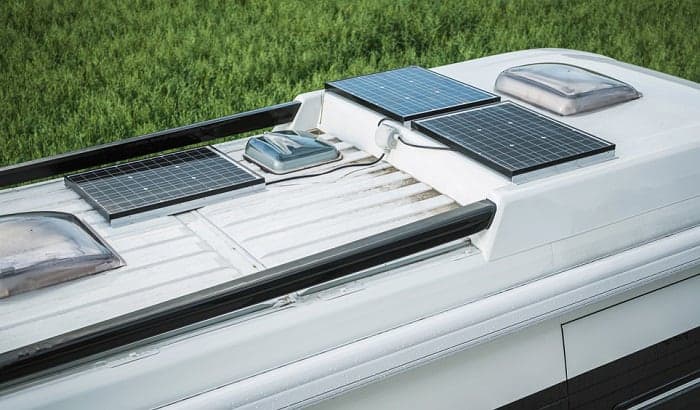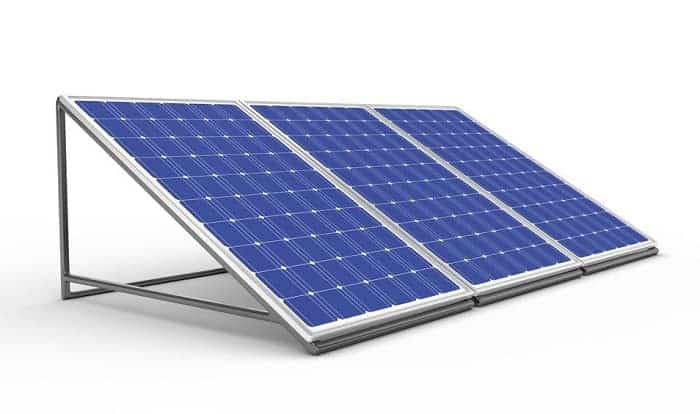Table of Contents
- What Amount of Power Does a 300 Watt Solar Panel Produce
- What Can a 300 Watt Solar Panel Run
- Is It Possible to Utilize Solar Panels without a Battery
- How to Determine the Number of 300W Solar Panels that You’ll Require
- How Many Amps Does a 12-Volt 300-Watt Solar Panel Generate
- How Long is Needed to Charge a 100ah Battery with a 300W Panel
- What is a Solar Panel Calculator
- Are 300W Solar Panels Suitable Options for Your Solar Panel System Installation
- Final Thoughts
What can a 300-watt solar panel run? A 300-watt solar panel produces a steady AC load of 270W; note that this already allows for 10% inverter losses.
With a 300W flexible solar panel kit, you can operate home appliances like vacuum cleaners, blenders, treadmills, and desktop computers.
Aside from these home appliances, it can also run a refrigerator that comes with a 120Ah lithium battery.
It’s essential to understand the amount of energy in watt-hours a 300W portable solar panel can generate and under what conditions.
In this post, we’ll discuss what a 300-watt solar panel can do for you. So, let’s get started!
What Amount of Power Does a 300 Watt Solar Panel Produce
Before uncovering what appliances can be utilized or run with a 300 watt panel, it’s essential to understand the amount of power we’re talking about. When you install 300W panels in a location where they’re exposed to long hours of direct sunlight, you’ll acquire approximately 300W of electricity.
The amount of power generated on overcast days will be meager. If you utilize a battery backup, then it should possess an identical rating to your solar panel. Keep in mind that the battery is exceptionally essential during periods of less sunlight.
What Can a 300 Watt Solar Panel Run
A 300W solar panel that absorbs 8 hours of sunlight per day will generate nearly 2.5 kilowatt hours per day. Hence, if we multiply this by 365 days annually, we acquire a solar output of roughly 900 kWh per year. Put simply, each solar panel will supply 900 kWh yearly.
If you consider all of the different conditions, there are certainly lots of devices and home appliances that could operate effectively using 300W solar panels. Such devices and appliances include TVs, stereos, LED lights, as well as laptops.
When you calculate solar panel output, it is critical to compare the output per day or month with the requirements of a device or appliance.
For example: 2.5 kWh per day for the panel (output per day/month), and the requirements of a device — like 3.8 kWh per day for a fridge. As you can see in this example, a 300W solar panel would not be adequate to run that fridge.
Look at it this way: a panel will operate for an extended period when you utilize one device or appliance. If you link multiple devices or appliances, you’ll obtain a shorter operation time. Note that appliances or devices will use up power differently, hinging on their power rating.
For instance: your fan will use up more power than your LED fixtures. So, if you don’t prefer to utilize your LED lights and a couple of fans for an extended period, avoid linking more devices. In doing so, you will obtain a few more hours of consumption time.
Devices that come with considerable power ratings won’t operate with a 300W solar panel. Take into consideration that your solar panel could merely generate a maximum power amount of 300W. Fundamentally, this isn’t enough to operate specific devices or appliances.
Is It Possible to Utilize Solar Panels without a Battery
You can utilize solar panels without batteries, and this is precisely how a grid-tie household solar system runs. The solar panel system feeds electricity into the national power grid when production is abundant.
On the other hand, while it’s possible to utilize a solar panel separately to run devices, this is not highly recommended. Further, some home appliances like refrigerators do not draw a steady load but cycle on and off.
It’s worth noting that when starting, a refrigerator requires three times more power than when operating; this is probably more than what the solar panel can produce.
Therefore, power storage in the form of a battery is required to serve as a power repository for the additional needs of cycling compressor motors.
How to Determine the Number of 300W Solar Panels that You’ll Require
One solar panel will supply you with energy for a couple of hours. So, if you need to utilize electricity for the entire day, you’ll require an additional 300W solar panel.
The location, size, rooftop, arrangement, and how a solar panel will be inclined towards the sun are crucial factors in figuring out the number of panels required for your home.
If you assemble more than six 300W panels in a small residence, you could utilize every device or appliance. TVs, LED lights, ceiling fans, etc., can all be operated simultaneously for over 6 hours the entire day.
Your house’s energy bill will significantly reduce if you also set up multiple solar panels. Please remember that for medium-sized offices, you could expect to install 50 300W solar panels. Moreover, if the office comes with several floors, the number of solar panels required will also increase.
You need to understand that solar panels also rely on the area of their installation. For example: for a 300W solar panel, if the roof space is over 100 square feet, you can set up roughly seven solar panels. As the area increases, the space for the assembly of more solar panels also increases.
It’s unnecessary to fill your entire roof with solar panels. Ultimately, it largely relies on your requirements and preferences.
If the space of your house is an average of 1,500 square feet, it’s necessary to assemble ten to fifteen solar panels to satisfy all your electrical requirements daily. You will lose some of the power to the environment; however, the loss rate is insignificant. Hence, it will be advantageous for you.
In case you do not wish to set up the solar panels on your roof, there are other means to put them on the ground.
How Many Amps Does a 12-Volt 300-Watt Solar Panel Generate
To compute for amps, recall the equation amps x volts = Watts.
If we take this example, that’s going to be amp multiplied by 12 V = 300 W.
Hence, using this formula, we discover that this solar panel will supply 25 amps.
How Long is Needed to Charge a 100ah Battery with a 300W Panel
Likewise, we need to use the same computation — dividing power in Watts by the Voltage in volts to get the amps.
Suppose your battery has 12V.
300 watts (solar panel) / 12V (battery) = 25 amps
100 ah battery / 25 amps = 4 hours
What is a Solar Panel Calculator
You might want to use a solar panel calculator to assist you in designing your solar panel system and compute your requirements. The solar sizing calculator enables you to input details regarding your lifestyle to aid you in deciding on your solar panel needs.
When using one, you have to know the total watts your appliances will use up, the efficiency of your solar charge controller, and how long you plan on operating your appliances. Additionally, you need to know the average sunlight hours per day in your area.
Taking these factors into account, you will know the recommended and minimum solar panel system size and the battery output with a solar panel calculator.
Meanwhile, this video is helpful if you wish to learn more about how much solar power you require or how to compute your power requirements
Are 300W Solar Panels Suitable Options for Your Solar Panel System Installation
300-watt solar panel systems are close to the average solar panel wattage utilized for solar assemblies and are great options for many homeowners. The 300-watt panels might indeed be pricier per panel compared to lower-watts models. However, they are still worthwhile investments considering the significant space they can save on your roof.
In addition, We have researched and reviewed 100-watt solar panel products. They could be a pretty good choice for you.
What’s more, they make up for the price premium since you can save more bucks on the lower number of panels you need to buy to cover your energy requirements.
Final Thoughts
You have learned in this post what can a 300-watt solar panel run. As stated, it might not be able to cover all of your energy requirements, and it’s necessary to install more panels to ensure a more efficient solar system.
It is vital to obtain a precise number of panels based on your solar energy needs. For this reason, there are substantial factors for you to look into, and these include:
- Knowing the total watts your devices will consume and your charge controller’s efficiency
- Knowing the average sunlight hours per day in your area
- Uncovering how long you intend to run your home appliances
Conclusively, 300-watt solar panels can offer countless benefits if appropriately utilized.

I am Kathleen Miller, staff writer and reviewer of the Avasolar team. Working with the team has been a pleasure for me so far, I hope to bring readers useful information by creating detailed and easy-to-follow contents.



